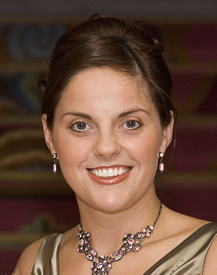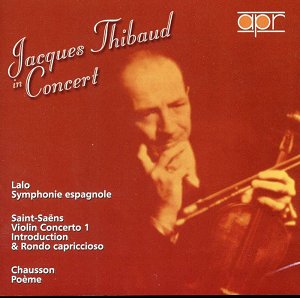Chausson Poeme Program Notes
Violin Sheet music › Violin and Piano › Ernest Chausson: Previous sheet music Next sheet music >> Poeme Op.25 Ernest Chausson. PLAYLIST VIDEO. Poeme Violin and Piano Lauren Keiser Music Publishing. $29.95 - See more - Buy online Pre-shipment lead time: 1 to 2 weeks. Similar items. Program Notes Each week, thousands of San Francisco Symphony concert-goers open their programs to read about the drama, the passion, and the inspiration behind the music they’re hearing. You can read our critically acclaimed program notes online one week prior to select concerts.
A cookie is an alphanumeric identifier that is transferred to your computer's hard drive through your web browser. A cookie enables our system to recognize your browser and allows us to keep your session intact on ArkivMusic.com. This means, for example, that we can keep track of items you've placed in your shopping cart while you continue to look for other products throughout the site. We will never use cookies to retrieve information from your computer that did not originate from ArkivMusic.com.


PROGRAM NOTES CONCERT AARON ROSAND AND ROBERT KOENIG (10/24/04) Aaron Rosand, Violin Robert Koenig, Piano By Lawrence Budmen 'Adagio,' K.261 Wolfgang Amadeus Mozart 'Rondo,' K.373 (1756-1791) In 1776 Mozart penned an Adagio in E for the Italian violinist Antonio Brunetti as a substitute slow movement for 'Violin Concerto No.5 in A Major,' K.219 - the 'Turkish' concerto. Brunetti was Mozart's successor as concertmaster of the Salzburg Court Orchestra. Five years later, in Vienna, Mozart wrote a gracious Rondo in C for Brunetti. The tempo marking Allegretto grazioso aptly describes the Rondo's aristocratic elegance. 'Sonata in A Major for Violin and Piano,' Opus 47 'Kreutzer' Ludwig van Beethoven (1770-1827) Beethoven referred to his A Major Violin Sonata as a 'Concerto-Sonata.'
Download how to draw fantasy females pdf. If you’re pretty good at what you do like all those advanced artist be the teacher, let other kids or adults learn from you, before you know it, you'll have fans. Even if you’re a beginning artist don’t be shy, this is the place were you will learn from others and get better. We encourage users that come to DragoArt to have fun, explore the site, and submit tutorials.
The score has an almost orchestral grandeur and symphonic stature. With this work, the sonata genre was changed forever.
Beethoven abandoned the finely chiseled elegance and intimacy of the salon for the majesty of the concert hall. The sonata was composed so rapidly, according to Beethoven's friend Ferdinand Ries, that, at the premiere on May 24, 1803 in Vienna, the mulatto violinist George Polgreen Bridgetower and Beethoven were sight reading from sheets of music paper on which the ink was still wet. Bridgetower was the son of Frederich de August, the page of Prince Esterhazy. Apparently a pupil of Haydn, Bridgetower had been a great success in London, where he performed in the Haydn concerts in the 1790's organized by Johann Solomon. Shin hakkenden download.
Bridgetower visited his mother in Dresden in 1802 (where he was brother was a court cellist) and, later, gave the premiere performance of Beethoven's new sonata in Vienna. When the score was published in 1805, Beethoven dedicated the work to the French violinist Rodolphe Kreutzer, a pupil of the Mannheim composer Anton Stamitz and first professor of violin at the new Paris Conservatoire. Beethoven had heard Kreutzer play in 1798 in Vienna, when he visited as part of the entourage of Count Bernadotte, Napoleon's ambassador.
Beethoven wrote to his publisher Simrock on October 4, 1804 'This able violinist is a dear good fellow who, while here, gave me great pleasure. I find his undemanding and natural behavior greatly preferable to the superficiality of most virtuosi.' Kreutzer never played the work. Strangely, his only legacy was Beethoven's immortalizing his name through this sonata. The bold opening Adagio and the furious Presto of the first movement make clear Beethoven's symphonic intentions. This is music that tests the limits of instrumental technique.
The second movement is a songful Andante in F - four variations on a syncopated theme. The Rondo-Finale was originally composed for the Violin Sonata, Opus 30, No.1 - a score that was dedicated to the Tsar. The tarantella like theme (in 6/8) has an inexorable sense of momentum. The entire score reaffirms the instrumental sonata in a bold, innovative manner. (This is Beethoven the Titan.) Beethoven's music continues to be Mount Olympus for violin virtuosi. 'Poeme,' Opus 25 Ernest Chausson (1855-1899) Ernest Chausson was the most gifted of the post Cesar Franck composers in 19th century France. His early death, in a bicycle accident, deprived the world of a potentially great creative talent.
His 'Symphony in E-flat' and 'Concerto for Violin, Piano, and String Quartet' are masterpieces that deserve more frequent performances. Chausson's 'Poeme' was composed in 1896 and dedicated to the great Belgian violinist Eugene Ysaye, who performed the work's world premiere.